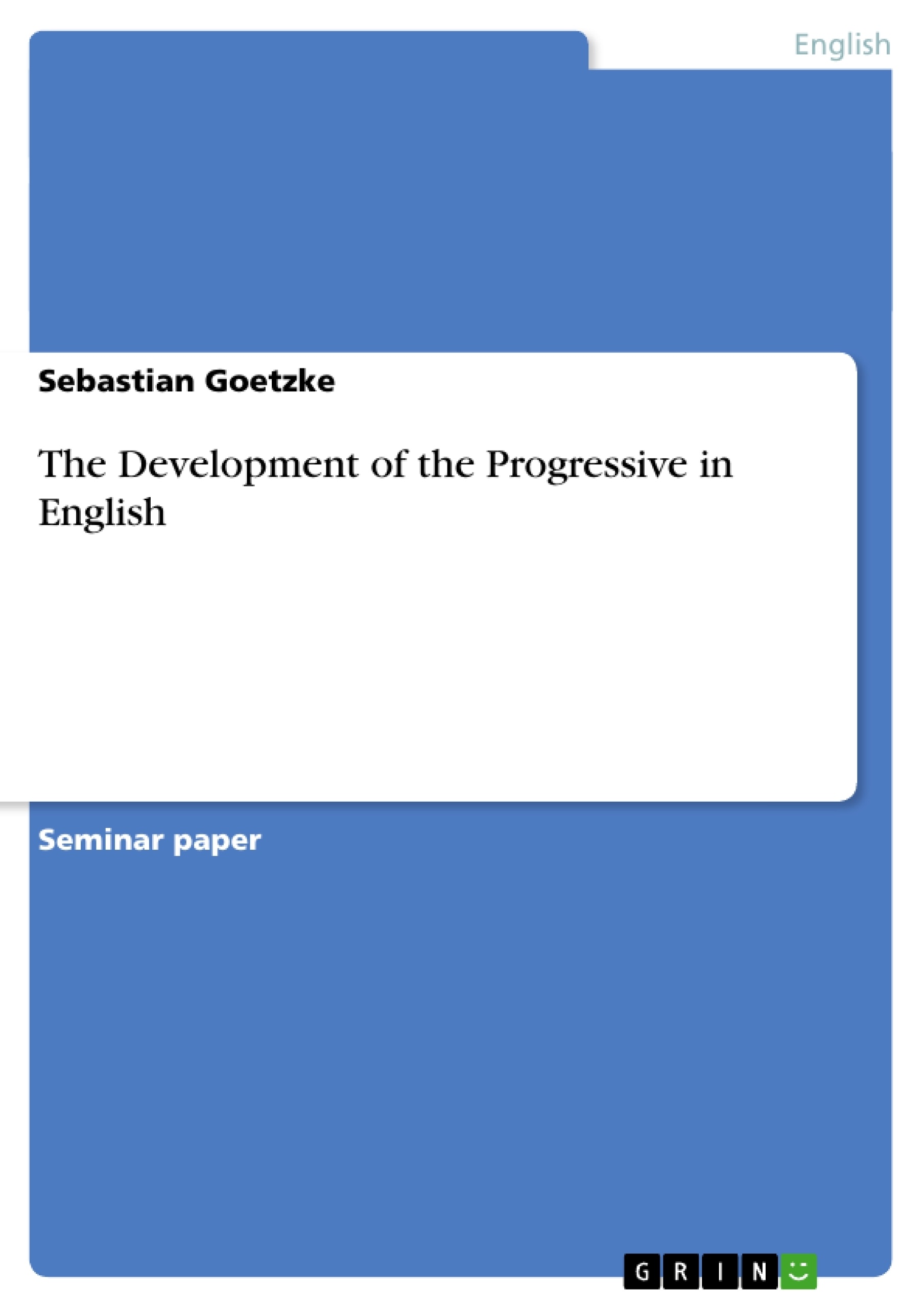In order to present a comprehensive and all-embracing picture of a linguistic phenomenon like the “progressive” it is important to provide an analysis of the problem from both a synchronic and a diachronic point of view.
Following this rule the subsequent paper is divided into two main parts.
In the beginning I will try to give a global picture of the progressive form in English as it is used today and I will focus on its meaning and basic functions as well as on its separation from other linguistic states.
The second section of this paper is devoted to the historical sources of the English progressive diachronically emerging from Old English over Middle English and Early Modern English into the progressive taught in modern grammars and school books.
I do have to mention though that, since I am not a student of Old English or Middle English, my abilities in reading and understanding certain sources and interpretations are limited.
In the process of this work I have tried to use secondary sources on Old and Middle English rather than primary sources and I have also tried to leave out most references or citations to primary sources. Nevertheless I believe that, in this paper, I can prove and demonstrate that the English progressive form used nowadays is derived diachronically and directly from Old English.
I will present authors who support this view as well as others who oppose it. As my main source I would like to mention Johannes Scheffer, Bybee, Susan Fitzmaurice, Eva Edgren and Debra Ziegeler.
Inhaltsverzeichnis (Table of Contents)
- Introduction
- 1. The progressive: A synchronic approach
- 1.1 The present day progressive
- 1.2 The main meanings and the functions of the progressive
- 1.3 Other meanings
- 1.4 The Progressive in other languages than English (locative aspect)
- 2. The progressive: A diachronic approach
- 2.1 Progressive Sources
- 2.2 Progressive in Old English
- 2.3 Progressive in Middle English
- Conclusion
- Selected Bibliography, Sources
Zielsetzung und Themenschwerpunkte (Objectives and Key Themes)
This paper aims to provide a comprehensive analysis of the English progressive form, examining its current usage and historical development. It will explore both the synchronic and diachronic perspectives of the progressive, drawing on a range of linguistic scholarship.
- The meaning and functions of the present day progressive
- The historical development of the progressive from Old English to Modern English
- The sources and influences contributing to the evolution of the progressive
- The distinction between the progressive and other grammatical constructions
- The relationship between the progressive and other aspects in languages besides English
Zusammenfassung der Kapitel (Chapter Summaries)
The introduction sets the stage for the analysis of the English progressive, outlining the paper's goals and structure. It highlights the importance of examining the progressive from both a synchronic and diachronic perspective.
The first chapter focuses on the synchronic approach to the English progressive. It describes the basic structure and main meanings of the progressive in contemporary English, outlining its key functions and separating it from other grammatical constructions.
The second chapter delves into the diachronic approach, tracing the development of the progressive from its roots in Old English through Middle English. It explores the sources of the progressive, its grammaticalisation process, and the emergence of different forms and uses over time.
Schlüsselwörter (Keywords)
The main keywords and topics addressed in this paper include the English progressive, synchronic and diachronic analysis, grammaticalisation, Old English, Middle English, aspect, tense, and locative aspect. It also explores the relationship between the progressive and other grammatical constructions, including the “going-to” future.
- Arbeit zitieren
- Sebastian Goetzke (Autor:in), 2003, The Development of the Progressive in English, München, GRIN Verlag, https://www.grin.com/document/20503



